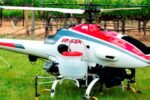New Zealand Merino’s market-making model pays dividends
The New Zealand Merino Company (NZM) has significantly lifted full-year profit and the dividend it will pay to its shareholders in 2014/15. NZM booked a $2.3 million net profit for the year, a 21% increase on the previous year. Shareholders, including 536 wool growers, will receive a total dividend of $1.15 million, up 23% on 2013/14. NZM chief executive John Brakenridge said the strong performance showed the company’s approach of value creation, as opposed to volume play, was a winning one. “Two decades ago fine wool was being dumped on the commodity market and sold at a discount to Australia. The growers knew they had a product that was undervalued and unrecognised. “So NZM was set up to maximise profitability and sustainability right across value chains; from market to grower. Key to this has been confronting volatility head on and establishing multi-year forward contracts that guarantee more stable prices for brands and growers alike.” By removing the boom-and-bust of commodity price cycles, NZM had generated more than $30 million in additional income for growers, across wool and meat programmes, in the past three years compared to returns via traditional commodity systems, said Mr Brakenridge. “This past year we’ve continued to grow our business through establishing new contracts with luxury and active apparel brands such as Loro Piana and Reda in Italy, New Zealand brand Icebreaker and Colorado-based SmartWool. “We’ve also extended our offering into strong wool, where we see excellent potential across the board through innovation. There’s great complementary between strong wool and our fine wool business. “It’s no good sitting back and waiting for the market to come to you. We want to shape it and secure exclusive deals with the world’s leading brands.” In April, NZM secured a two-year contract with Danish footwear firm Glerups to exclusively supply […]









